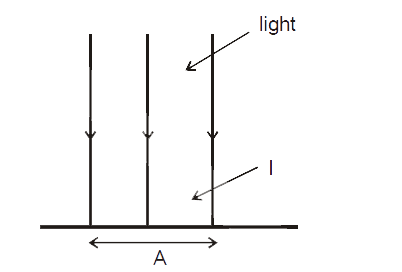A beam of light of certain intensity and wavelength ejects photoelectrons from a metal surface. This beam is then replaced by another beam of less intensity and smaller wavelength . As a result
emission of photoelectrons is stopped
no change in intensity and wavelength is produced
K.E. of the photoelectrons increases but the photoelectric current decreases
K.E. of the photoelectrons decreases but the photoelectric current increases
The correct Answer is:C
Step by step video, text & image solution for A beam of light of certain intensity and wavelength ejects photoelectrons from a metal surface. This beam is then replaced by another beam of less intensity and smaller wavelength . As a result by Physics experts to help you in doubts & scoring excellent marks in Class 12 exams.
Topper's Solved these Questions
- BOOK - MARVEL PUBLICATIONCHAPTER - ELECTRONS AND PHOTONS EXERCISE - TEST YOUR GRASP - 1715videos
ELECTRONS AND PHOTONS
- BOOK - MARVEL PUBLICATIONCHAPTER - ELECTROMAGNETIC INDUCTION AND ALTERNATING CURRENTS EXERCISE - TEST YOUR GRASP - 1630videos
ELECTROMAGNETIC INDUCTION AND ALTERNATING CURRENTS
- BOOK - MARVEL PUBLICATIONCHAPTER - ELECTROSTATICSEXERCISE - TEST YOUR GRASP20videos
ELECTROSTATICS
Similar Questions
Knowledge Check
- Question 1 - Select One
A light beam containing a number of wavelengths is used in an photoelectric experiment. The stopping potential :
Ais related to mean wavelength.Bis related to maximum wavelengthCis related to the maximum K.E. of emitted photoelectronsDis related to intensity of incident light. - Question 2 - Select One
Two beams of light having intensities I and 4I interfere to produce a fringe pattern on a screen. The phase difference between the beams is π/2 at point A and π at point B. then the difference between the resultant intensities at A and B is
A2IB4IC5ID7I - Question 3 - Select One
Assertion : When certain wavelength of light fall on metal surface it ejects electron.
Reason : Light was wave nature.AIf both assertion and reason are true and reason is the correct explanation of assertion.BIf both assertion and reason are true but reason is not the correct explanation of assertion.CIf assertion is true but reason is false.DIf both assertion and reason are false.
The work function for a metal surface is 2.0 eV. Determine the longest wavelength that will eject photoelectrons from the metal surface.
View SolutionA beam of light having wavelength λ and intensity 1 falls normally on an area A of a clean surface then
find out the number of photon incident on the surface.
 View Solution
View SolutionA plane mirror reflects a beam of light to from a real image. The incident beam is
View SolutionA beam o monochromatic light of wavelength λ is reflected from air into water to refractive index 4/3. The wavelength of light beam inside water will be
View SolutionTwo beams of ligth having intensities I and 4I interface to produce a fringe pattern on a screen. The phase difference between the beams is π2 at point A and π at point B. Then the difference between the resultant intensities at A and B is
View Solution

